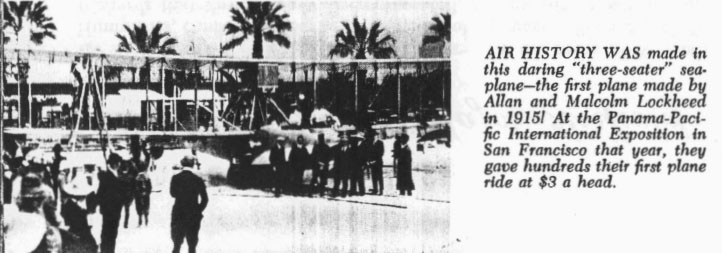
Lockheed Comes to
From The Story of

The history of Lockheed Aircraft Corporation
reads like a story.
It dates back to 1912 - a scant five
years after Orville and Wilbur Wright made their historic flight at
Back in February of 1928, when Allan
Lockheed moved his little airplane factory and 50 employees from Hollywood into a two-story
brick ranch house at “Turkey Crossing” that provided offices and engineering rooms,
and into a portion of a brick factory that became the woodshop, sheet metal and
assembly area, probably no one dreamed that its coming would so vitally affect the
future of this community.
Its location wasn't considered very
desirable.
To the west and south stretched miles
of vineyards, fruit orchards, alfalfa fields and truck gardens, divided by an occasional
tree and spots of un-reclaimed desert and rocky washes.
Even farther west was

A dead-end street running southwest
separated the group of factory buildings. Just southeast was the Empire China Company, where a group of experts from
But, because it was three miles from
town, it was a good place to build and fly airplanes.
Back of the new plant, for a third
of a mile along the Southern Pacific's
coast route, workmen leveled the sagebrush and tumbleweeds for a landing strip about
twice the width of a Lockheed Vega's 41-foot wing span. Twice a year this strip
had to be graded to fill in the gopher holes and keep the weeds down. This was before
planes had brakes, and the low embankment
of the railroad spur into the factories often stopped the planes before they ran
out into the dirt road to the east.
Pilots were able to "spot"
Lockheed by the seven large brick kilns
of the china factory and the two big chimneys of the glass works. Once in
a while when a plane buzzed too low, its engines set up vibrations that knocked
down a few dishes from the racks in the kilns, and brought complaints from the china
factory. But generally all was harmony in the little industrial group.

Newspaper accounts hailed Lockheed's
decision to move to